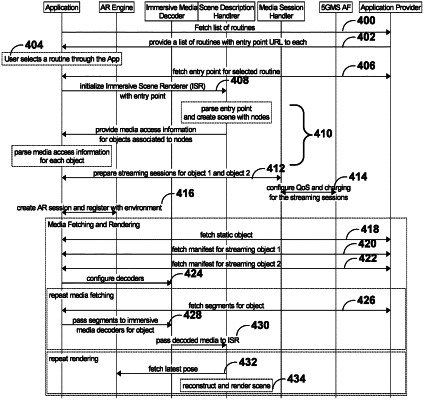| CPC H04N 21/816 (2013.01) [G06T 11/00 (2013.01); G06T 19/006 (2013.01); H04N 19/20 (2014.11); H04N 21/435 (2013.01); H04N 21/8455 (2013.01); H04S 7/30 (2013.01); H04S 2400/11 (2013.01)] | 29 Claims |

|
1. A method of processing extended reality (XR) data, the method comprising:
parsing entry point data of an XR scene to extract information about one or more required virtual objects for the XR scene, the one or more required virtual objects including a number of dynamic virtual objects equal to or greater than one, each of the dynamic virtual objects including at least one dynamic media component for which media data is to be retrieved;
initializing a number of streaming sessions equal to or greater than the number of dynamic virtual objects using the entry point data, wherein initializing the streaming sessions includes initializing the streaming sessions in compliance with configured quality of service (QoS) and charging information for the streaming sessions;
retrieving media data for each of the dynamic media components of the dynamic virtual objects via one of the respective number of streaming sessions; and
sending the retrieved media data to a rendering unit to render the XR scene to include the retrieved media data at corresponding locations within the XR scene.
|